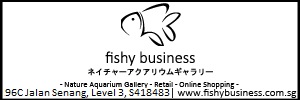Henri's filter design is great when humidity is lower.
I have strong reservations about how helpful it is in tropical areas near oceans, for humidity is high enough that evaporatiive cooling is greatly reduced.
If I was back in Puerto Rico and it was one of their rare hot days*, I would drop an icecube or two into the tank and turn off lights to slowly lower temperature, Maybe do a very small water change <20%> and add a vigorous airstone to get oxygen up as high as possible (and get any evaporation cooling it can provide). AFAIK, oxygen tablets are not available in the US (or probably PR).
[Hence they have never been needed or used for hatching annuals, and we have always had good hatches with few belly-sliders.  ]
]
Wright
_______________________
*It once got to a record 92F (33C) in the town where I lived in 1953.
01 760 872-3995
805 Valley West Circle
Bishop, CA 93514 USA










 Reply With Quote
Reply With Quote





Bookmarks